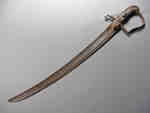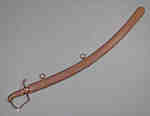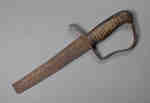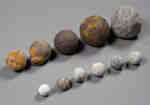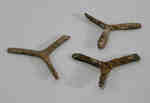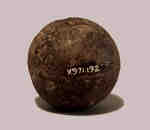Results
- These are cannon balls from the Battleground Hotel Museum.These are cannon balls from the Battleground Hotel Museum.
- These are remnants of a canister shot that is believed to be from one of Niagara’s Battlefields. This form of ammunition, also referred to as a grape shot, was fired at an angle from a cannon and relThese are remnants of a canister shot that is believed to be …
- A sword believed to have been unearthed at one of Niagara’s Battlefields. Inscriptions include “HADLEY” with three circles (near the handle) and “4” with a crown on the blade. The grip of the handleA sword believed to have been unearthed at one of Niagara’s Battlefields. …
- This is a remnant of the tip of a bayonet sheath which can be found at the Battleground Hotel Museum.This is a remnant of the tip of a bayonet sheath which …
- These are various pieces of a musket action that were unearthed at one of Niagara’s Battlefields. These items are on display at the Battleground Hotel Museum.These are various pieces of a musket action that were unearthed at …
- The origin of the sword is unknown and there are no distinct markings on it. It is believed however, that the sword would have been carried by the Light Cavalry (Light Dragoons and the Hussars). TheThe origin of the sword is unknown and there are no distinct …
- The blade is 80.5 cm long x 2.5 cm wide and tapers to a spear point. The pattern is common to that of 1769 but was most likely still used by the War of 1812. The sword has an urn hilted pommel with aThe blade is 80.5 cm long x 2.5 cm wide and tapers …
- The sabre and scabbard are curved steel that has since rusted. The scabbard has two steel bands with two rings attached and a rounded tip. It has “OSBORNE & GUNBY, BIRM.” inscribed on the base. The sThe sabre and scabbard are curved steel that has since rusted. The …
- Set of cannon balls that were unearthed in one of Niagara's battlefield sites.Set of cannon balls that were unearthed in one of Niagara's battlefield …
- This cavalry sword with a wooden handle is measured at 13 ¾ inches long. It was said to have been recovered from one of Niagara’s Battlefields. This item is on display at the Battleground Hotel MuseuThis cavalry sword with a wooden handle is measured at 13 ¾ …
- These are various sizes of small cannon shot and musket balls from the Battleground Hotel Museum.These are various sizes of small cannon shot and musket balls from …
- Referred to in "Guns Through the Ages" by Geoffrey Boothroyd.Referred to in "Guns Through the Ages" by Geoffrey Boothroyd.
- This iron tool was used to strike a flint to create sparks and start a fire. The arms of the tool curve inward, towards the center of the tool. The flint striker is fairly rusted.This iron tool was used to strike a flint to create sparks …
- These prickers, dated 1812, were used as a screwdriver for a musket. It is “Y” shaped, with the top “V” forming the handle and the bottom arm narrowing to fit into the screw. The musket tool was usedThese prickers, dated 1812, were used as a screwdriver for a musket. …
- The sword, which is made of brass and steel, has a lion's head pommel and a curved blade. Along with its scabbard, it is believed to have belonged to the Musician in Captain Raunchey's Volunteers (CoThe sword, which is made of brass and steel, has a lion's …
- This is a wooden ramrod, circa 1812-1814, that was used by the artillery to wedge the ball into the breech of the cannon. 196 cm long and painted black.This is a wooden ramrod, circa 1812-1814, that was used by the …
- This triangular bladed bayonet was designed to fit on the muzzle of a rifle or musket barrel, making it into a close range weapon. This would have been on arguably every soldier’s firearm during theThis triangular bladed bayonet was designed to fit on the muzzle of …
- This musket, circa 1812, is a 3rd Model “Brown Bess” 1790 with an “India Pattern” design. It was a British regulation issue flintlock musket. There are various engravings on the musket that include:This musket, circa 1812, is a 3rd Model “Brown Bess” 1790 with …
- This iron fashioned ammunition was likely created during the War of 1812 period. It gives an insight into the appearance of military munitions during the 1812 time. Diameter: 5 cmThis iron fashioned ammunition was likely created during the War of 1812 …
When selecting an individual record or object, you will move
to the website of the heritage institution that houses the item.
To return to the search or results pages, select "Back", "Results" or "New Search".
 This project was made possible with the support of the Department of Canadian Heritage
This project was made possible with the support of the Department of Canadian Heritage
through the Canadian Culture Online Strategy.
to the website of the heritage institution that houses the item.
To return to the search or results pages, select "Back", "Results" or "New Search".
 This project was made possible with the support of the Department of Canadian Heritage
This project was made possible with the support of the Department of Canadian Heritage through the Canadian Culture Online Strategy.











